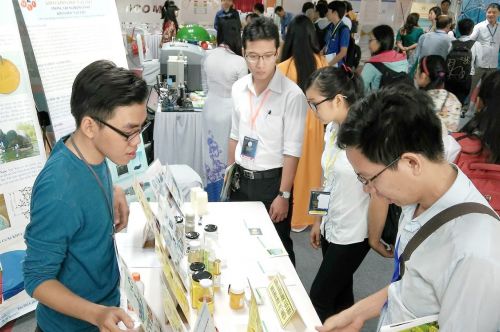Garment companies struggle to escape outsourcing
Some months ago, Garmex Saigon went to the US to sign a franchise contract to exploit Gramicci, a brand of outdoor clothing and sportswear with a distribution network in seven states in the US and on Amazon.
Explaining the decision, Le Quang Hung, chair of Garmex Saigon, said the company finds it necessary to follow a new development way in the context of deeper global integration, especially as the Trans Pacific Partnership Agreement (TPP) has been signed.
According to Hung, the business mode will take full advantage of both Gramicci and Garmex Saigon. Gramicci has advantages in distribution network, but it is weak in the production force. Meanwhile, this is the strong point of Garmex Saigon.
A lot of Vietnamese garment companies which do not want to outsource for foreign partners have decided to find new ways to develop.
What Garmex Saigon can expect from the contract is that it would be able to take the initiative in programming its production and looking for materials, minimizing risks and making fatter profit.
Under the contract, Garmex Saigon will exclusively exploit Gramicci brand for five years, for which it will pay 3 percent of total annual revenue to the US brand.
In the immediate time, Garmex Saigon will use Gramicci’s designers in the US, who understand the culture and taste of local consumers. Products will be made in Vietnam and then exported to the US to be distributed via Gramicci’s network.
Garmex Saigon hopes it can earn $18 million in revenue from brand exploitation by 2018, which accounts for 10 percent of the company’s total revenue.
The move taken by Garmex Saigon is described as a ‘daring move’ in the current conditions of the Vietnam’s garment industry, where 85 percent of companies just do outsourcing for foreign partners and pocket only 25 percent of the product value.
Vietnam exported $27 billion worth of textile and garment products in 2015.
Vietnamese companies have been urged to shift from doing outsourcing to making products to export under FOB (free on board), ODM (original design manufacturer) or OBM (original brand manufacturer) modes.
According to Le Quoc An, a textile & garment expert, branding and distribution are the two most difficult works for Vietnamese businesses. Many Vietnamese tried to develop brands and distribute their products overseas, but failed because of limited resources.
An underwear company once bought a French brand and exported products under the brand to European market. Six years ago, a Vietnamese company rented a chain of shops in the US to expand the market. But it had to stop after two years because of limited capital.


